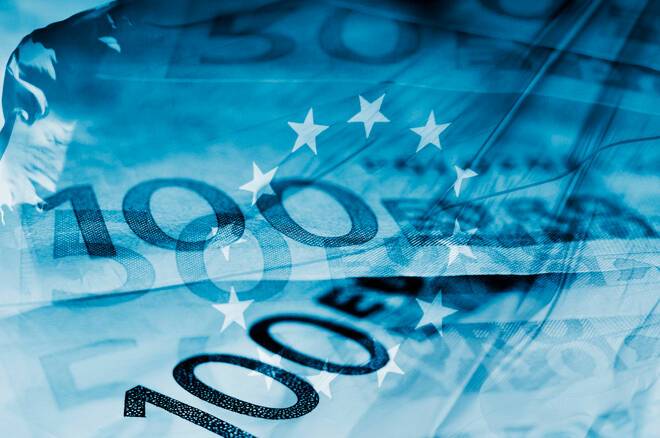Advertisement
Advertisement
German Trade Surplus Narrows in October Providing Little EUR Comfort
By:
A narrowing trade surplus and uncertainty over how the Omicron strain could further exasperate supply chain issues and inflation was an early test for the EUR.
It was a quiet day on the Eurozone economic calendar. German trade data was in focus going into the European open.
In October, Germany’s trade surplus narrowed from a revised €12.9bn to €12.5bn. Economists had forecast a widening to €13.6bn.
According to Destatis,
- Month-on-month, exports increased by 4.1% and by 8.1% year-on-year.
- Imports rose by 5.0% month-on-month and by 17.3% year-on-year.
- In Oct-2020, the trade surplus had stood at €19.7bn.
Trade with EU countries
- German exports to EU member states increased by 11.6% year-on-year, while imports rose by 14.6%.
- To the euro area, exports were up 12.8% when compared with Oct-2020. Imports from euro area countries were up 18.8%.
- Exports to EU countries not belonging to the euro area increased by 9.0%, while imports rose by a more modest 6.0%.
Trade with Non-EU Countries
- Exports to third countries increased by 4.1% compared with Oct-2020.
- Imports from third countries was up by 20.4%.
Other Notable Countries
- Exports to the UK were down 11.5%, with imports from the UK falling by 2.9%.
- To China, exports rose by 8.5% and by 11.4% to the U.S.
Market Impact
Ahead of today’s stats, the EUR had risen to a pre-stat and high $1.13464 before easing back.
In response today’s stats, the EUR rose to a post-stat high $1.1331 before falling to a post-stat and current day low $1.1317.
At the time of writing, the EUR was down by 0.18% to $1.13224.
Next Up
Jobless claims figures from the U.S.
About the Author
Bob Masonauthor
With over 28 years of experience in the financial industry, Bob has worked with various global rating agencies and multinational banks. Currently he is covering currencies, commodities, alternative asset classes and global equities, focusing mostly on European and Asian markets.
Advertisement
